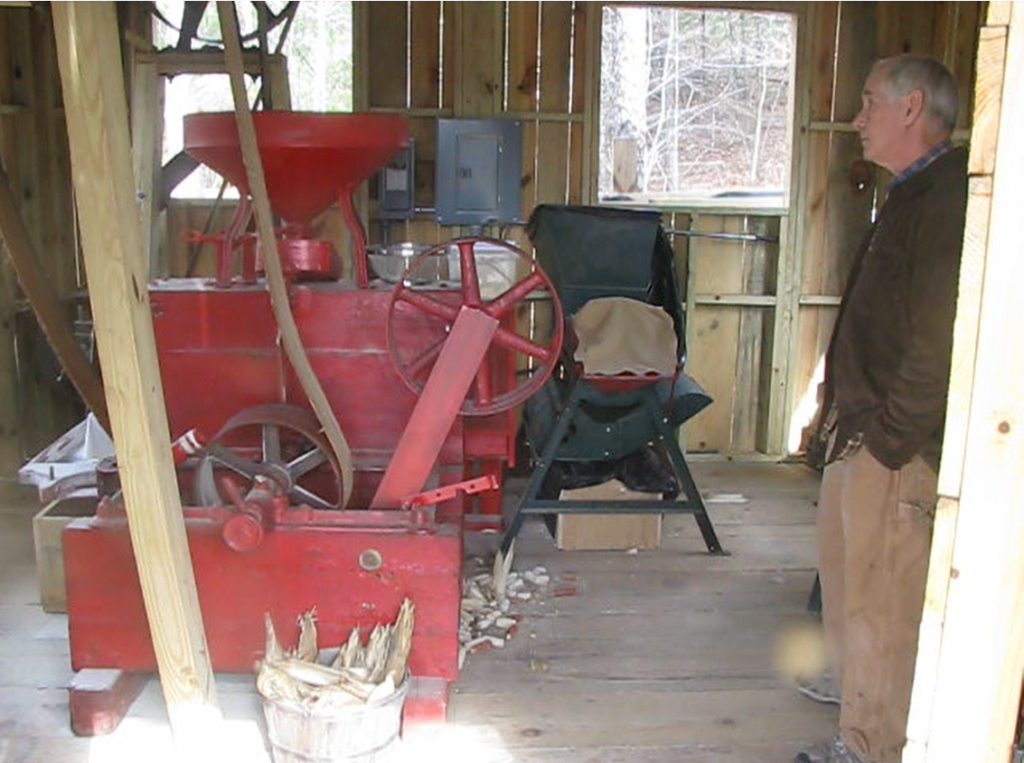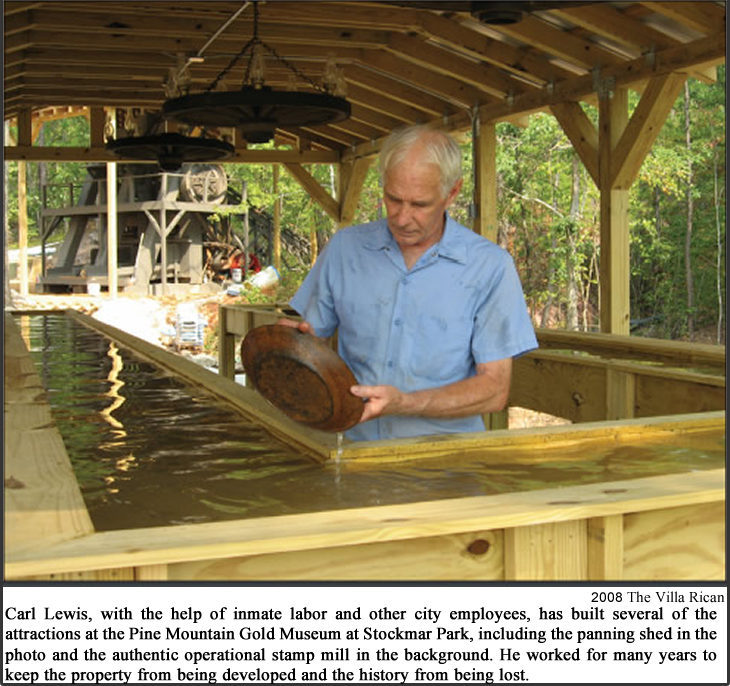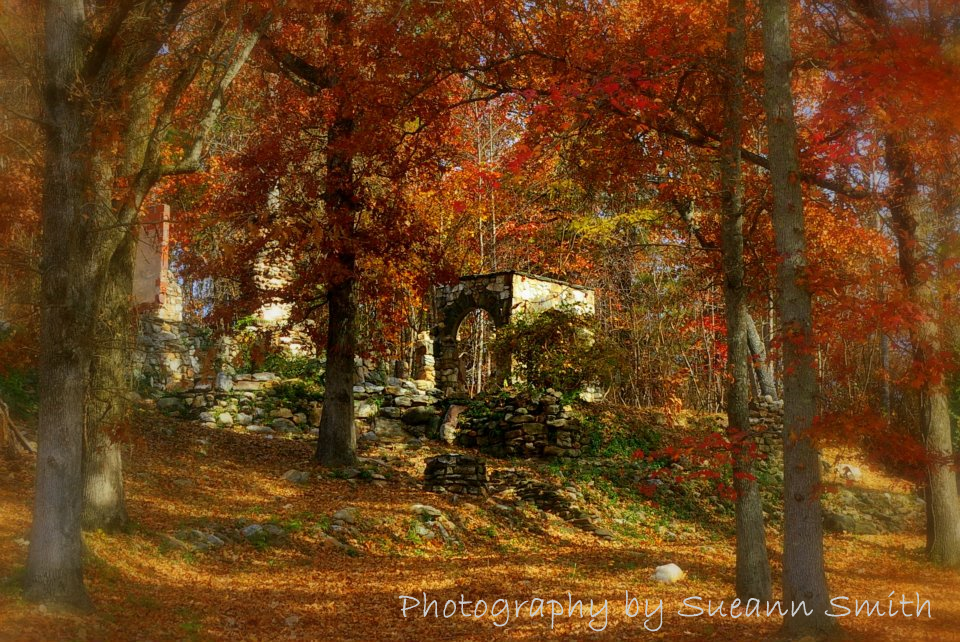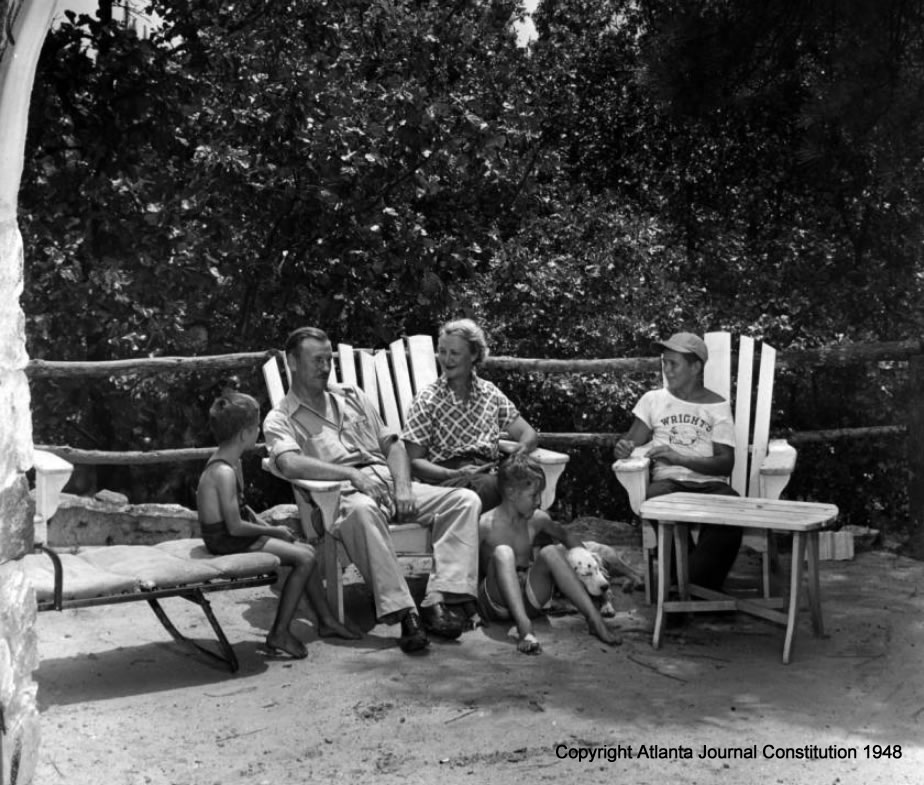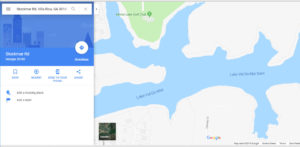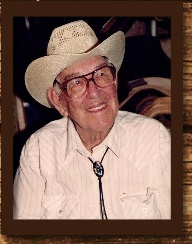This is the story of the Flying S Saddle Club at its beginning in the Spring of 1952, as written for the Atlanta Journal Constitution, December 7, 1952, by Olive Ann Burns, famous author, who at the time was a staff writer.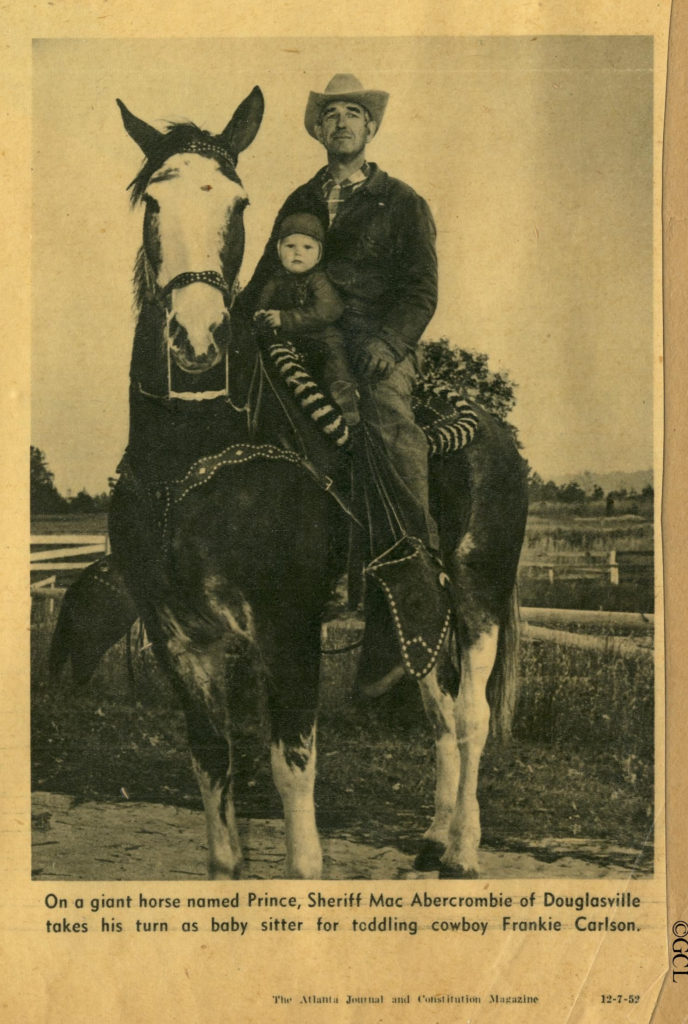
On a horse hike, the Flying S Saddle Club looks like the original sheriff’s posse out for a shoot’m up.
Though not a posse, the club IS headed by a sheriff-big Mac Abercrombie of Douglas County, Georgia. He rides a giant gray named Prince, a horse so tall that anybody shorter than Mr. Abercrombie needs an elevator to mount. Prince can close a car door with his nose and will chase anything that runs-cow or man.
The sheriff rounds up his Saddle Club members every month on the Wednesday nearest the full moon. Those who live too far away for hoofing bring their horses in trucks. If the meeting place is the Flying S Ranch near Villa Rica, riders come before sundown for competitive games and racing, then take off down the trail behind a covered wagon that is loaded with supper.
Sometimes the club stages a town meeting, which is like a circus parade. Anybody who ever knew a horse is lured to the streets by clip-clops, loud on the pavement. Automobile drivers stare at the close-riding column with envious, hungry eyes. A 5-year-old says, “Look, Mama, at the horses smoking!” (Their breath hits the frosty air in round white jets of steam.) Excited dogs bark impudently, dodging about between hoofs. There is the mixed sound of leather and jingling reins, shouts of riders calming frisky, snorting mounts, and cheers from the crowd at the sight of a dignified fellow townsman playing cowboy.
For the children, the Saturday matinee has come to life. They dash about shooting imaginary guns and yelling, “Hi-yo, Sil-ver-r-r! Awa-a-ay!” There were 101 horses when the club paraded in Bremen, Ga., and it was a sight to see.
This is a society of rough riders who stick to a saddle in the Western style, without fancy posting. On ranch outings there’s a whoop-and-holler atmosphere. A rambunctious fellow charges his horse straight toward the campfire and stops the thundering hoofs on a dime-just short of denting another horse’s fender. Hot rod boys on hot rod horses go thrill racing, and it’s hard to say whether the boys or the animals enjoy it most.
Horseback riding by moonlight is a kind of thrill that trolley and car riders never know. The night sky is very big in open country, and the eerie beauty of moonlight has a special unreality when your head is nine feet up. You look for ghost riders, but the only soundless moving shape is the long, four-legged, two-headed shadow that follows you down the trail.
Membership in the Saddle Club is open to anybody over 16 who lives within meeting distance and either owns a horse or craves to own one. You can apply to Mrs. Vera Stockmar, care of Flying S Ranch, Villa Rica, Ga.
The 125 riders who now belong are from Villa Rica, Carrollton, Douglasville, Bremen, Atlanta and rural routes between. They are of all ages and occupations-teen-agers, housewives, business girls, farmers, lawyers, cashiers, grocerymen, carpenters; there’s a doctor, a pharmacist and a veterinarian.
Several members are nonriding wives-Mrs. Hoyt Easterwood, for example, who prefers a chair to a saddle because saddles are so high up. She comes with her husband and 9-year-old Larry. The boy is too young for membership, but he’s always at the roundups. He has to keep to the rear of the posse because his pony kicks.
Before dark there are usually several little children who get passed from saddle to saddle as members take turns at an equestrian baby sitting. One of the happiest is a toddler, Frankie Carlson, son of Mr. and Mrs. Ed Carlson, of Carrollton.

The club’s most picturesque honorary member is Mrs. Fannie Turner, a spry little old pioneer lady, age 83, who lives at the Flying S Ranch and limits her riding to the front seat of the chuck wagon. She wears long skirts and a hooded bonnet and has a reputation for sagebrush platitudes like “There ain’t nothin’ so becomin’ to a fool as a shet mouth-which maybe is why I like horses.”

NOTE: The Pine Mountain Gold Museum Community Garden Exhibit is called, “Mrs. Turner’s Garden at Stockmar Park.”
Please follow and like us!
